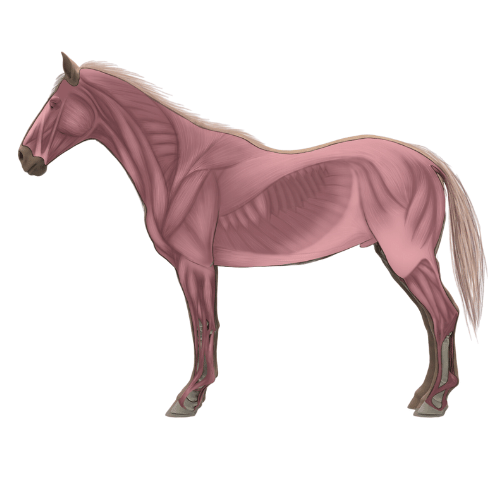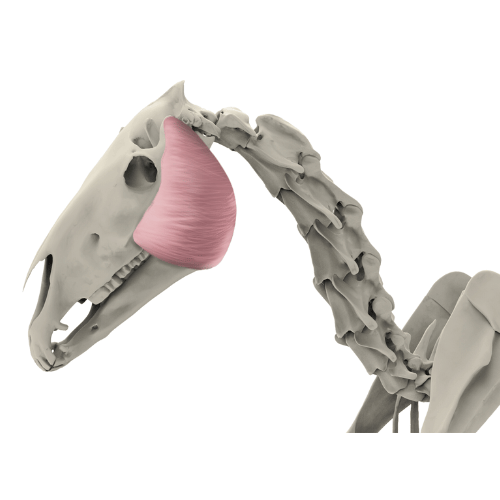The horse's musculature is complex and impressive: With around 260 muscles, it accounts for up to 45% of the horse's total weight and is crucial for the horse's mobility and stability. There are over 100 muscles in the horse's torso and about 40 in the head. The forelimbs are supported by 46 muscles, while the hind limbs have 66 muscles. Most of these muscles are paired and located symmetrically on both sides of the body, although a few—such as the sphincter muscles—are unpaired and present only once.
/wp:paragraphwp:heading
Muscles and their connections
/wp:headingwp:paragraph
Normally, muscles are connected to the horse's skeleton via tendons, allowing them to produce the movements that so fascinate us. These muscles never work alone: Instead, they work together in groups to enable movement. It's important to know that muscles can only "pull"—they never "push." A muscle can shorten through contraction, but only in conjunction with an opposing muscle, called an "antagonist," that reverses or counteracts the movement. For example, one muscle flexes the leg while the opposing muscle straightens the leg.
/wp:paragraphwp:heading
Different functions of the muscles
/wp:headingwp:paragraph
The horse's muscles perform a variety of functions: Some muscles are responsible for the movement and posture of the limbs, while others support the internal organs, stabilize the body, or close body openings. Depending on their function, the muscles can be divided into flexors, extensors, spanners, and closers. Together, they enable the horse to perform complex movements, whether walking, running, or in specific postures that are crucial for balanced training.
/wp:paragraphwp:heading
Anatomical division of the muscle layers
/wp:headingwp:paragraph
The horse's musculature can be divided into three layers: the superficial, middle, and deep muscles. The superficial layer is visible and palpable, so it can be directly reached and cared for with special tools such as the NeedleyRoll fascia massage roller . The middle and deep muscles, on the other hand, contribute significantly to stabilizing the body and are primarily responsible for internal balance and posture.
/wp:paragraphwp:paragraph
Regular use of the NeedleyRoll fascia massage roller can help relieve tension in the superficial muscles and stimulate circulation and metabolism. It is a valuable tool for the long-term care and promotion of horse muscle health – both for existing tension and for preventative muscle relaxation.
/wp:paragraphwp:buttons
/wp:buttons
wp:woocommerce/all-products {"columns":3,"rows":3,"alignButtons":false,"contentVisibility":{"orderBy":true},"orderby":"date","layoutConfig":[["woocommerce/product-image",{"ima geSizing":"thumbnail"}],["woocommerce/product-title"],["woocommerce/product-price"],["woocommerce/product-rating"],["woocommerce/product-button"]]}
/wp:woocommerce/all-products



Leave a comment
This site is protected by hCaptcha and the hCaptcha Privacy Policy and Terms of Service apply.